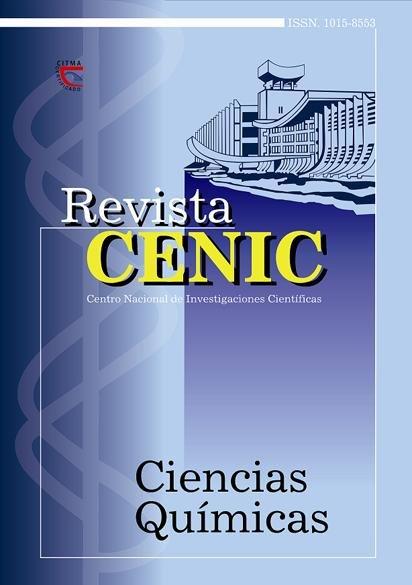Optimization of the enol ether formation reaction of androstenedione
Abstract
The search for suitable protecting groups of carbonyl and hydroxyl functions has beer, of continuous 1^. portance in steroid chemistru~y. Carbonyl groups are protected by formation of cyclic or acyclic ketals and thioketals, hemithioketals, cool ethers and thioenol ethers and are stable in basic medium. They are resistant to reduction with metal hydrides and with sodium and alcohol; Grignard reactions; Oppenauer and chromic anhydride-pyridine oxidations and to treatment with acylating or dehydrating agents in pyridine. However, they are regenerated easily by acids to the corresponding ketone. In this work, the optimization of the carbonyl protection reaction of position 3 of androstendione molecule with enol ether formation has been accomplished using the composite central 2' factorial design. The model was adjusted with a correlation coefficient of 0,9971 and an absolute medium error of 4,18 %. For optimum conditions maintaining as restriction the study limits of each parameter, the conversion was of 99 %. The results were by studying the response surfaces and the isolines curves, showing in all cases the existence of an optimum zone near to center of applied design. Finally, the substitution results of paratoluensulphonic acid by methanosulphonic acid are shown, giving higher yields of this reaction than previously reported, with additional savings on the cost of raw materials.

Downloads
Published
How to Cite
Issue
Section
License
Copyright (c) 2002 Copyright (c) 2002 Revista CENIC Ciencias Químicas

This work is licensed under a Creative Commons Attribution-NonCommercial-ShareAlike 4.0 International License.
Los autores que publican en esta revista están de acuerdo con los siguientes términos:
Los autores conservan los derechos de autor y garantizan a la revista el derecho de ser la primera publicación del trabajo al igual que licenciado bajo una Creative Commons Atribución-NoComercial-CompartirIgual 4.0 que permite a otros compartir el trabajo con un reconocimiento de la autoría del trabajo y la publicación inicial en esta revista.
Los autores pueden establecer por separado acuerdos adicionales para la distribución no exclusiva de la versión de la obra publicada en la revista (por ejemplo, situarlo en un repositorio institucional o publicarlo en un libro), con un reconocimiento de su publicación inicial en esta revista.
Se permite y se anima a los autores a difundir sus trabajos electrónicamente (por ejemplo, en repositorios institucionales o en su propio sitio web) antes y durante el proceso de envío, ya que puede dar lugar a intercambios productivos, así como a una citación más temprana y mayor de los trabajos publicados (Véase The Effect of Open Access) (en inglés).













